July 28, 2020 – Volume 22, Issue 3
In This Issue
- Flanigan’s EcoLogic: Big Time Renewables
- Biking in the Pandemic
- Micro-Schooling
- High Speed Rail to Vegas
- Portland’s Virtual Power Plant
- Big Energy Storage
- Dave Freeman’s SMUD Legacy
- Paper Bottles
- Wireless EV Charging
- EcoMotion Works
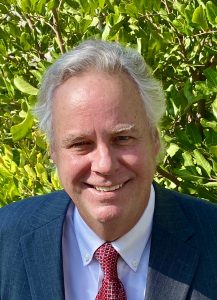
Flanigan’s EcoLogic: Big Time Renewables
Great news, especially for those of us proud of New York roots. July 21st, Vice President Al Gore was at New York Governor Andrew Cuomo’s side to witness the signing of a bill for the largest combined renewable energy solicitation in the United States. It calls for 4,000 MW of clean energy made up of 2,500 MW of offshore wind and 1,500 solar in increments of 20 MW and up. This is big time renewables… what many of us have dreamed to come true. The bill is expected to spur $7 billion in direct investments and to create 4,500 jobs on the path to meeting New York’s climate protection goals.
This is New York’s second offshore wind solicitation, the first was in 2018 for 1,700 MW. This one involves incentives for a multi-port strategy linking winning contractors with select New York seaports eager for economic development and to coordinate operations and maintenance activities for the offshore wind operations. The solicitation and its results will bring New York halfway to meeting its 9,000 MW goal for renewable power by 2035. The State is also on track to secure 70% of its power requirement from renewables by 2030.
New York’s clean energy action, and similar actions around the country are making waves. The Energy Information Administration of the U.S. DOE announced in May that renewables provided 25.3% of the country’s power… topping one-quarter of our national power thirst for the first time ever.
For those of us deeply concerned about the state of the climate and our planet, Presumptive U.S. Presidential Candidate Joe Biden’s $2 trillion proclamation – supporting clean energy jobs and infrastructure — is big-time and welcome news. It’s a platform that excite me, potentially resulting in a massive focus and infusion in the clean energy sector that’s so ripe for scale.
I’ve admired Washington Governor Jay Inslee for his concern and commitment. In my view, the plan that he championed was spot on. Love the spirit of the Green New Deal. These are the foundations of Biden’s new plan. Now we have a presidential candidate using clean energy and the energy industry’s critical transformation to being carbon-free, to stimulate the economy. It’s a smart way to address the dual post-pandemic economic and climate challenges.
The Biden plan is “big and bold.” Imagine a…
- $2 trillion investment over four years in infrastructure, transit, buildings, housing, and agriculture creating a million new jobs.
- Pledge to eliminate carbon pollution from power plants by 2035.
- Requirement that all new buildings have net-zero emissions by 2030.
- Plan to install 500 million solar panels and 60,000 wind turbines over the next 5 years.
- Cutting emissions in half from existing buildings with energy efficiency upgrades.
This EcoNet News issue presents futuristic concepts that are no longer futuristic: Plastic bottles replaced with paper bottles? Bike lanes replacing lanes of traffic heretofore reserved for cars? Wireless EV charging? The issue is about beating aggressive targets… SMUD accelerating its carbon neutrality goal by a decade. Now Biden accelerating his primary climate platform by 15 years and boosting it from $170 billion a year, to $500 billion a year. He gets it. The climate emergency is serious stuff that needs huge attention right now.
Quote of the Week
“During one of the most challenging years New York has ever faced, we remain laser-focused on implementingour nation-leading climate plan and growingour clean energy economy…”
Biking in the Pandemic
 A small but shining silver lining… the Corona virus has accelerated the shift to pedal power in Europe and the United States. The German Cycling Association (ADFC) reports that Germans across the country are spending twice as much time biking as they were before the pandemic. There is surging demand for bikes and shared-bike subscriptions, and now even shortages throughout bicycle supply chain. For bike shops it’s an unprecedented boom. So much so that it requires cities to improve their biking infrastructure.
A small but shining silver lining… the Corona virus has accelerated the shift to pedal power in Europe and the United States. The German Cycling Association (ADFC) reports that Germans across the country are spending twice as much time biking as they were before the pandemic. There is surging demand for bikes and shared-bike subscriptions, and now even shortages throughout bicycle supply chain. For bike shops it’s an unprecedented boom. So much so that it requires cities to improve their biking infrastructure.
In unimagined numbers, bikes are starting to squeeze out cars in our cities. This uptick in cycling has spurred 930 miles of new bike lanes in Europe, “muscling aside cars on Europe’s city streets,” according to European Cyclists Federation. Belgium, Denmark, and the Netherlands are pioneering fast lanes for commuters. “Pop-up lanes” are being used for bikes in Berlin and Paris; Rome has painted new bike lanes, in each case taking away lanes from cars.
Germany is the largest bicycle market in Europe with 1.36 million bikes sold in 2019 and now a surge in demand. That compares with 3.6 million cars sold last year. According to Bloomberg Energy News that volume tumbled 35% in the first half of 2020.
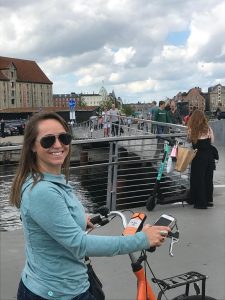
Women riders are reportedly a big factor in the biking revolution. Ebikes are too. Ebikes use an onboard battery to boost power to the drive train when the rider is going up a hill, or just needs a rest. Ebikes have removed “the sweat factor.” Who wants to show up to work or a party sweaty? Many Europeans that use Ebikes see them as substitutes for their cars. They are switching to bikes and Ebikes for their commutes to improve health and fitness, save money, because they enjoy riding, and for the sake of the environment. Nine in ten Danes own a bike; only four in ten own a car.
The European Cyclists’ Federation states that bikes are strongly supported by European governments to cut carbon and increase the quality of their cities. European countries provide direct financial incentives for cyclists. At the end of April, France announced a 20 million Euro plan to promote cycling after the end of the lockdown. The plan includes 50 Euro vouchers for the repair of a bike. Italy worked on a decree for Covid recovery whereby 120 million Euro was set aside for purchase subsidies covering 70% and up to 500 Euro of the price of conventional, muscle-powered and electric bikes.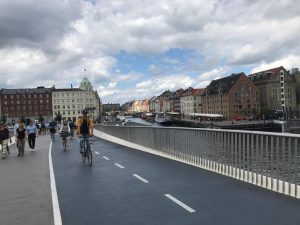
Not to be outdone, go USA! Our country’s bike shops are booming too. There have been record online bike sales. One survey found that nationwide bike sales have doubled, leisure bikes up 121%, commuter bikes up 66%, Ebikes up 85%. A bike shop in Brooklyn, New York, claims sales 600% of that a year ago. Hard to find “sub-$1,000 bikes” in Chicago. For Richards Bike Mart in North Texas, sales are up 30%. It’s hiring new staff for repair services. Many shops have long wait lists for bikes. A D.C. retailer noted its largest sales volume in 50 years of operating the shop.

Hundreds of thousands of Americans are “flocking to one of the most basic forms of mobility: the bike.” Many are taking up cycling for the first time in 10, 20, 30 years. It’s a good form of socially distanced exercise, especially now with gyms closed. Trek Magazine reports that its survey of adult bikers found that 21% plan to ride more during the pandemic, and 50% say they keep it up post pandemic.
The pandemic will likely permanently transform society in many ways, and biking is one of them. This dramatic uptick is and will be changing the urban infrastructure. In April, New York City temporarily opened 100 miles of roads to pedestrians and cyclists. Oakland shut down 10% of its streets during the pandemic for cars.
There’s now even a bike shortage – lagging behind the PPE shortage — due to tariffs on bikes from China, lower production, and fewer imports. As the benefits of biking become engrained in our lives, our urban infrastructures will change too… with less focus on cars and more on the cycling form of “active transportation.”
Micro-Schooling
Thanks to my friend and colleague Eric Hall for bringing “micro-schooling” to my attention. It may have a big impact on our young minds as well as our energy consumption. Read later in this issue that school transportation energy use can be nearly double school facility energy use.
Micro-schooling is about rethinking the traditional education model to better prepare students for the future. It’s about parents who concerned both about the safety of their children, and who are also concerned about the inadequacies of remote learning.
Micro-schooling is like a modern one-room schoolhouse, a cooperative arrangement between families with students of varying ages who meet in small groups to take instruction by a licensed professional teacher or a home schooler instructor. The result is small neighborhood schools – what some call “pandemic pods” — that usually have less than 10 – 15 students.
High Speed Rail to Vegas
The vision of taking a high-speed train to Vegas is many Californians’ dream. Traffic on Interstate 15 to and from Vegas can be the ultimate antidote to fun in Sin City! The train will be fast and stress free.
A private developer named ExpressWest recently entered into a lease agreement with the California Department of Transportation to construct its rail line on the Interstate 15 median. About 135 miles of the ExpressWest’s 150-mile route is in California, in parts passing through lands managed by the Bureau of Land Management and the National Park Service. The privately financed project is slated to cost $7 billion. It will first link Las Vegas and Victorville; later extending another 80 miles into Los Angeles.
Formerly known as DesertXpress, the original plan had been to go to Palmdale and to connect with the California High Speed Rail there. Now the intent is to get all the way to Los Angeles, tying in with the California High Speed Rail, and Amtrak, and regional Metrolink and Metro. The rail to Vegas concept has had a history of funding challenges. It had been backed by the hotel management group, Marnell, and then later experienced a failed partnership attempt with China Railways International. Ultimately the project was bought by a Florida-based passenger rail operator – then called Brightline — now the ExpressWest is backed by Virgin Trains Health Canada Pharmacy USA, the only privately owned and operated intercity passenger railroad in the United States.
Portland’s Virtual Power Plant
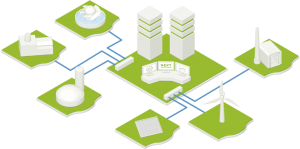 The notion of a virtual power plant is reminiscent to me of the days of the residential power plant powered by energy efficiency. Today’s virtual power plants, however, are all about distributed energy storage. Imagine batteries in every home to mollify spikes in the grid, to optimize on renewable’s intermittent production, and if the grid goes down, to provide homeowners with a modicum of resilience… 12 – 18 kWh of it!
The notion of a virtual power plant is reminiscent to me of the days of the residential power plant powered by energy efficiency. Today’s virtual power plants, however, are all about distributed energy storage. Imagine batteries in every home to mollify spikes in the grid, to optimize on renewable’s intermittent production, and if the grid goes down, to provide homeowners with a modicum of resilience… 12 – 18 kWh of it!
Portland General Electric’s virtual power plant project is not the first in the country. Green Mountain Power has been providing its customers with Tesla PowerWalls for some time. These programs speak to the power of the masses. What if every home stored 18 kWh that could be released as programmed?
In Glendale where I live, there are 50,000 residential customers. If everyone hosted a storage device – as far-fetched as it may seem – that’s 900,000 kWh. If discharged over a six-hour period, that would represent a 150 MW power plant. Already our progressive utility is planning 75 MW of storage. A virtual power plant might triple that.
Big Energy Storage
The largest battery in the country – 62.5 MW — was connected to the California Independent System Operator (CAISO) grid in June. It’s the first phase of LS Power Group’s Gateway Energy Storage Project in San Diego County. The complete 250 MW project will come online in August and will be the largest battery system in the world. “A turning point,” noted CAISO president and CEO Steve Berberich. Another storage project slated to come online soon is Vistra Energy’s Moss Landing 300 MW storage project.
CAISO has 216 MW of operational commercial storage capacity; that figure will rise to 923 MW by end of the year. That’s six times the 136 MW that was online at the beginning of 2020. In July, the California PUC decided to use storage as the marginal resource (instead of natural gas-fired turbines) in determining the avoided cost of generation. This move, some say, is part of a growing consensus that renewables will become California’s primary energy source, and not just in the middle of the day as storage flattens the duck curve.
There are ~170 battery systems greater than 1 MW in the United States today. Storage is becoming competitive with other marginal resources. According to the Natural Resources Defense Council, this evolution is largely being driven by carbon reduction and clean energy goals at the state level. Analysts calculate that for California to be carbon free by 2045, it will require 15,000 MW of battery storage to fully utilize intermittent renewables as the backbone electricity generation. The Long Duration Energy Storage Association advocates for short and long-term storage solutions.
Dave Freeman’s SMUD Legacy
 Well, let’s hand it to Dave…. After all, he was the captain of the ship when SMUD (the Sacramento Municipal Utility District) ditched nuclear at Rancho Seco and went instead with efficiency and renewables. That’s S. (for Simon) David Freeman. He was prescient. My colorful, witty, and ruthless former boss at LADWP, he recently passed away after a brilliant career with many meaningful contributions to public service. Under his quite-revolutionary direction, SMUD became a cutting-edge utility, and still is. He set the tone years ago… to accomplish the unthinkable ahead of schedule.
Well, let’s hand it to Dave…. After all, he was the captain of the ship when SMUD (the Sacramento Municipal Utility District) ditched nuclear at Rancho Seco and went instead with efficiency and renewables. That’s S. (for Simon) David Freeman. He was prescient. My colorful, witty, and ruthless former boss at LADWP, he recently passed away after a brilliant career with many meaningful contributions to public service. Under his quite-revolutionary direction, SMUD became a cutting-edge utility, and still is. He set the tone years ago… to accomplish the unthinkable ahead of schedule.
This past week SMUD announced its goal to be 100% renewably powered by 2030, fifteen years ahead of SB 100’s 2045 mandate. Its “Climate Emergency Declaration” was unanimously approved by the SMUD Board. SMUD now plans $7 billion of investments in the next two decades. These include 2,900 MW of new carbon-free resources, including 1,500 MW of utility-scale solar, 670 MW of wind, and 560 MW of utility-scale storage.
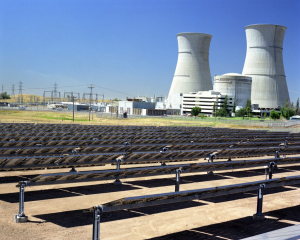
SMUD serves a population of 1.5 million. It emitted 1,755,000 tonnes of CO2e greenhouse gases in 2018. That’s half of its 1990 levels. It had developed a plan to reach carbon neutrality by 2040, but later – and after a string of horrific forest fires in California– the effects of climate became patently apparent to the SMUD Board and to the community, so the utility accelerated its timeline by a decade.
According to the Smart Electric Power Alliance, 56 utilities across the country have public carbon emissions reduction goals, committing to be carbon free or net zero by 2050.
Paper Bottles
Over the past decade there has been increasing concern about single-use plastics. Microplastics have leached toxins into the world’s oceans and water supplies. There are now 100 million tons of plastics in the oceans. A report developed by the World Economic Forum states that by 2050 there will be more plastic in the oceans by weight, than fish. Awareness about this travesty is rising; industries are innovating and scurrying for alternative solutions.
Given concerns about plastics, in 2019 Pepsi pledged to reduce virgin plastics content across its beverage business by 35%. It also pledged that 100% of its packaging will be recyclable, compostable, or biodegradable by 2025. It has now reached 90% of that goal. Pepsi has been trying alternatives to plastic, including aluminum cans for its Aquafina water product. It has used recyclable molded pulp rings for sixes of its soda cans to protect wildlife. Now it has an agreement in place with Pulpex Limited, “a sustainable packing technology company” that boasts creating the world’s first ever 100% plastic-free, paper-based spirits bottle.
Plastic-free, paper-made bottles developed by Pulpex are poised to debut in 2021. Its bottles are made entirely from sustainably sourced wood. Early in the year, Diageo will introduce the Pulpex bottles for its Johnny Walker Scotch whiskey. Then Pepsi will follow suit and will offer beverages in the new bottles. Unilever will use the technology for its personal and household care products. Pulpex is fully recyclable in standard waste streams.
Developing a paper bottle that can hold liquids and still be 100% plastic free hasn’t been easy. While layered packaging solutions hold liquids better, they can’t be easily recycled. TetraPak uses layers of polyethylene, paper, and aluminum. Carlsberg – as well as CocaCola — has been working with the Danish company, Avantium, to develop a bioplastic to line the insides of its paper beer bottles. The bioplastic is created from sugars extracted from sustainably-grown plants. Carlsberg hopes to sell its pilsner in cardboard bottles, bottles that will decompose in one year in a composter.
Wireless EV Charging
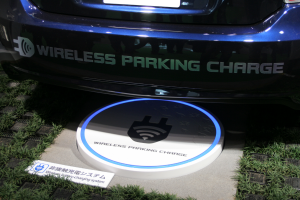 Wireless EV Charging has been discussed for some time. Inductive charging works for smart phones and electric toothbrushes. There have been efforts to develop it for cars by Kia and BMW. Jaguar considered incorporating wireless charging for its Norwegian taxi industry and its new I-Pace. Now an Australian company by the name Lumen Freedom has become first in the world to receive certification that allows for public use of wireless car charging.
Wireless EV Charging has been discussed for some time. Inductive charging works for smart phones and electric toothbrushes. There have been efforts to develop it for cars by Kia and BMW. Jaguar considered incorporating wireless charging for its Norwegian taxi industry and its new I-Pace. Now an Australian company by the name Lumen Freedom has become first in the world to receive certification that allows for public use of wireless car charging.
Lumen believes that its resonant magnetic induction charging system will change the recharging industry forever, thanks to its ease. Lumen Freedom now offers a “single-box 11 kW system.” The company has developed the power source and required ground assembly, and the part that needs to be fitted to the electric vehicle. It is not waiting for car manufacturers to do this. Boston-based company WiTricity has licensed the Lumen Freedom technology. Furthermore, Lumen is working on technology so that cars can be charged even when moving.
A U.S. company is also gearing up. Evantran from Richmond, Virginia offers its Plugless system for Tesla Model S, BMW i3, Nissan Leafs, and Chevy Volts. The Plugless system is based on two magnetic coils… one in a parking pad and the other mounted to the underside of the EV. The system works by “passing power over the air gap.” It claims the world’s leading autonomous charging station, with over a million hours of field testing. Plugless charges at the same speed as a level 2 charger (240 volts/50 amps), providing 20 – 25 miles of range per hour.
EcoMotion Works
GreenerU: EcoMotion is pleased to announce that a partnership with GreenerU was formed in June. GreenerU and EcoMotion have joined forces to promote solar and efficiency for New England colleges and universities. EcoMotion’s Benefactor Investment Model will offer innovative financing for solar, efficiency, storage, and controls to GreenerU’s clients.
LCFS Analysis: EcoMotion analyzed and presented our finding on California’s Low Carbon Fuel Standard program, and notably its relevant credits to the Chula Vista Elementary School District. Thanks to CVESD’s 10 new Ebuses that will be powered with the sun (triggering the LCFS Zero Carbon Intensity pathway), CVESD is poised for significant annual savings. EcoMotion’s analysis includes the District’s CNG buses which also currently are eligible to earn credits.
Strategic Energy Management Plan: At the end of June, in partnership with the Murley Consulting Group, EcoMotion delivered a Strategic Energy Management Plan (SEMP) and 90-minute presentation to Murrieta Valley Unified School District officials. The SEMP provides context, baseline conditions, alternative paths for the future, the economics of additional solar, and specific recommendations on additional energy management steps to save energy, carbon, and the environment. Interesting finding: Transportation energy – a cost borne by the District and community — is nearly twice the cost of powering, heating, and cooling the campuses.
GCCD Fuel Cell Energy Strategy Validation: In July, EcoMotion completed a Fuel Cell Energy Strategy Validation Study for the Glendale (CA) Community College District. The study explores an array of options to “power the future” and then focuses on two: solar and fuel cells. Each provides significant benefits, limited by utility regulations. The Validation Study provides in-depth financial and environmental analyses and concludes with six specific recommendations for the College. The environmental analysis compares fuel cell emissions with grid emissions, current and future, as well as marginal power plants based on the utility’s integrated resource plan.
We’ve Gone Virtual! This past month, EcoMotion went virtual. As a team we decided to give up our hip and centrally located downtown LA office, and to continue to walk the latest talk – which is Zoom everything — and to go virtual. So, we packed up and moved out. Our official business address in Glendale is listed below on this newsletter.
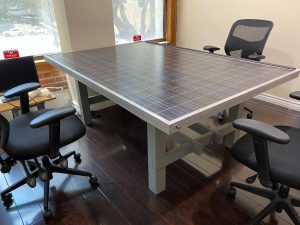
OfferUp is another “disruptive technology” that makes great sense. It’s a re-use application. We’ve been posting office furniture, rugs, file cabinets, ergonomic chairs, and even our classic – and quite massive — EcoMotion solar worktables. OfferUp and similar services provide the ability to stay at home and sell good stuff at a fair price, with cash transactions outdoors. Love it. It’s rewarding to feel the enthusiasm of a buyer getting a good deal for something that has lost its utility and luster to me. That’s quite something, always unexpected and nice. In fairness, not all good: One buyer hastily cut a three point turn on our front lawn after buying a bookshelf!
